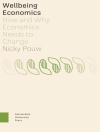This Second Edition of The Tao of Statistics: A Path to Understanding (With No Math) provides a reader-friendly approach to statistics in plain English. Unlike other statistics books, this text explains what statistics mean and how they are used, rather than how to calculate them. The book walks readers through basic concepts as well as some of the most complex statistical models in use. The Second Edition adds coverage of big data to better address its impact on p-values and other key concepts; material on small data to show readers how to handle data with fewer data points than optimal; and other new topics like missing data and effect sizes. The book’s two characters (a high school principal and a director of public health) return in the revised edition, with their examples expanded and updated with reference to contemporary concerns in the fields of education and health.
قائمة المحتويات
Acknowledgments
About the Author
Introduction to the Second Edition
1. The Beginning – The Question
2. Ambiguity – Statistics
3. Fodder – Data
4. Data – Measurement
5. Data Structure – Levels of Measurement
6. Simplifying – Groups and Clusters
7. Counts – Frequencies
8. Pictures – Graphs
9. Scatterings – Distributions
10. Bell-Shaped – The Normal Curve
11. Lopsidedness – Skewness
12. Averages – Central Tendencies
13. Two Types – Descriptive and Inferential
14. Foundations – Assumptions
15. Murkiness – Missing Data
16. Leeway – Robustness
17. Consistency – Reliability
18. Truth – Validity
19. Unpredictability – Randomness
20. Representativeness – Samples
21. Mistakes – Error
22. Real or Not – Outliers
23. Impediments – Confounds
24. Nuisances – Covariates
25. Background – Independent Variables
26. Targets – Dependent Variables
27. Inequality – Standard Deviations and Variance
28. Prove – No, Falsify
29. No Difference – The Null Hypothesis
30. Reductionism – Models
31. Risk – Probability
32. Uncertainty – p Values
33. Expectations – Chi-Square
34. Importance vs. Difference – Substantive vs. Statistical Significance
35. Strength – Power
36. Impact – Effect Sizes
37. Likely Range – Confidence Intervals
38. Association – Correlation
39. Predictions – Multiple Regressions
40. Abundance – Multivariate Analysis
41. Differences – t Tests and Analysis of Variance
42. Differences that Matter – Discriminant Analysis
43. Both Sides Loaded – Canonical Covariance Analysis
44. Nesting – Hierarchical Models
45. Cohesion – Factor Analysis
46. Ordered Events – Path Analysis
47. Digging Deeper – Structural Equation Models
48. Abundance – Big Data
49. Scarcity – Small Data
50. Fiddling – Modifications and New Techniques
51. Epilogue
عن المؤلف
Dana K. Keller, Ph D, has explored Eastern philosophies for almost five decades, including a journey to China and Tibet. He embraces two very different worlds: the West’s scientific approach to knowledge and the East’s more intuitive and experiential approach. In The Tao of Statistics, he presents a way that the two worlds can mutually benefit. After supervising the research for over 100 doctoral dissertations, he joined the Delmarva Foundation as its chief statistician. During his seven years there, the Centers for Medicare & Medicaid Services named him as a national resource for the nation’s managed care organizations for sampling and research methodology. His almost unique ability to explain statistical and methodological constructs in everyday language has resulted in his being frequently requested as a presenter and technical expert panel member. As president of Halcyon Research, Inc., he continues to bring his ability to explain statistical concepts simply to an ever-widening audience.












